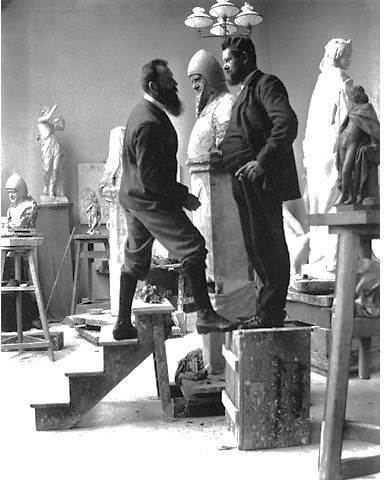Name August Kraus | Died 1917 | |
 | ||
August Friedrich Johann Kraus (9 July 1868, Ruhrort - 8 February 1934, Berlin) was a German sculptor.
Contents
Life
He was the son of a coachman. In 1877, the family moved to Baden-Baden where he became an apprentice to a headstone sculptor. His family moved again in 1883, this time to Strasbourg, and he continued his studies at the municipal Arts and Crafts School. From 1887 to 1891, he was enrolled at the Prussian Academy of Art in Berlin, where he studied with Ernst Herter. For the next seven years, he was a Master Student of Reinhold Begas and continued to work under his influence for some time after.
In 1900. his work on the Siegesallee (Victory Avenue) project won him the Academy's "Staatspreis", which included a stipendium for five years of study in Rome. This enabled him to break away from his artistic and financial dependence on Begas. Once there, his style took a turn towards Neoclassicism.
Upon his return, he became a member of the Berlin Secession and served as its Vice-President from 1911 to 1913. He was Director of the Rauch-Museum from 1914 to 1920. The Sculptors' Association of Berlin elected him its first President.
After the Nazi Machtergreifung in 1933, he signed a Declaration of Loyalty to Hitler and became a member of the Presidential Council of the Reichskulturkammer. That same year, he was appointed chairman of the Department of Fine Arts in a newly "cleansed" Academy and served as Provisional President until his death. It has been reported that he died at the exact moment his statue of Henry the Child in the Siegesallee was being damaged by a storm, but this is probably apocryphal. He is buried in the Friedhof Heerstraße, but also has an "honorary grave" in Berlin.
